Buses in Central America
Buses in Central America are not really like the buses in South America due to the shorter distances, smaller countries, and generally lower level of wealth in the region. There are quite a few different kinds of transport options and we managed to sample a bit of variety on our travels across the regions. So let’s start with the most famous of all – the chicken bus!
Chicken buses
As mentioned, the most famous type of bus in Central America is the ‘chicken bus‘ – so called because sometimes people carry chickens on them – they are used a lot in a rural areas.
To be honest we didn’t see a great deal of chickens being carried around on these buses, which are usually old school buses imported from the U.S.A, that have been refurbished and brightly painted by the owners. Sometimes people don’t bother to paint them and then you are literally getting on an American school bus – sometimes even the old school name is still on it.
We took our first chicken bus in Panama, from David to Boquete – and it turned out to be one of the ‘unpainted’ varieties of school bus. It was actually fairly comfortable and not very crowded.
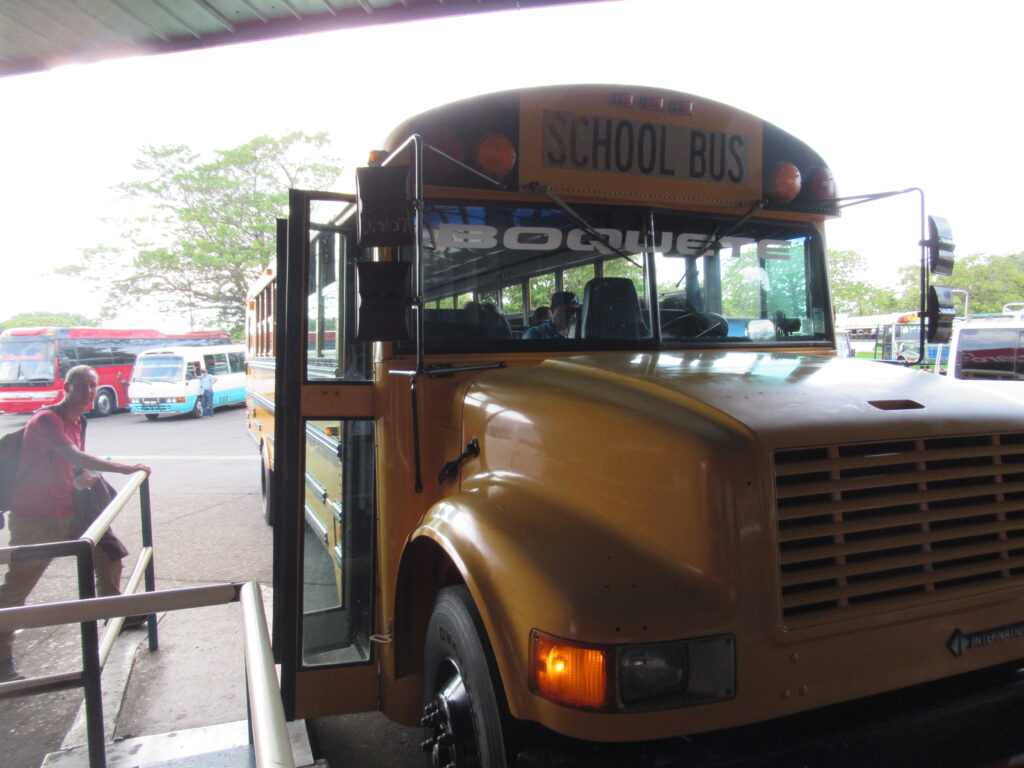
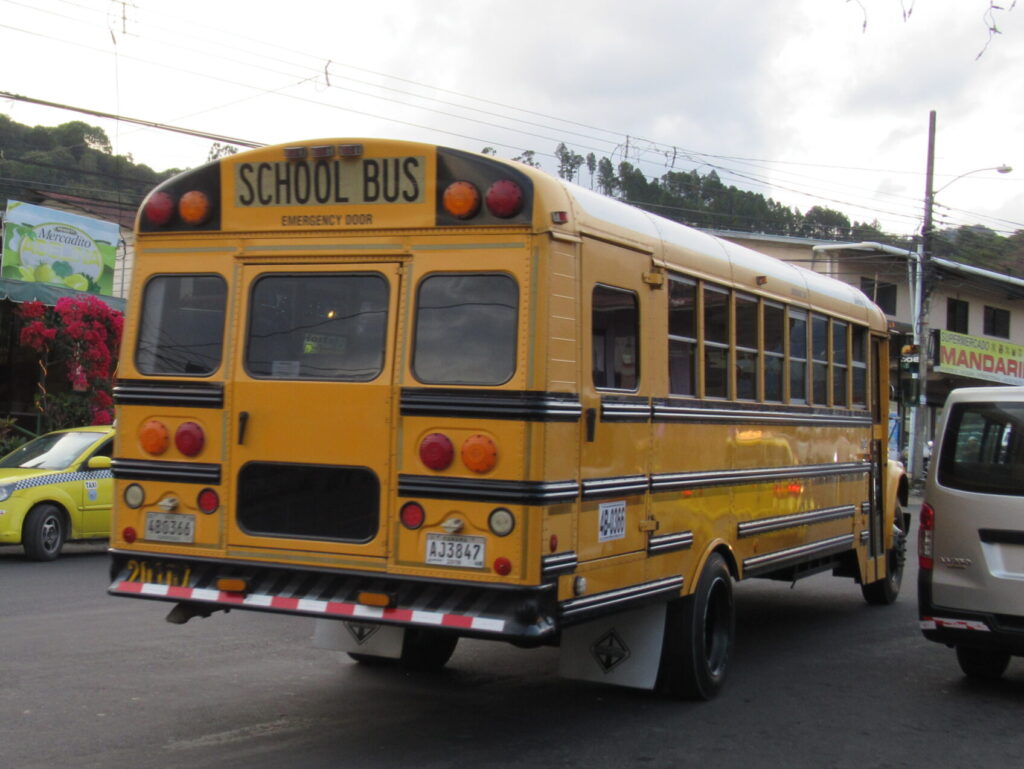
Costa Rica seemed to lack chicken buses with what I would call ‘city buses’ seeming to replace them on the shorter rural journeys – more about them later…
However, once we arrived in Nicaragua they were back in full force and we went from the Costa Rican border to Granada using two of these buses, which were very crowded. Space is so tight on these buses, that if you have a large bag you often have to pay an extra fare to travel as it is taking the space of a person.

The place where we used chicken buses the most was in El Salvador, as we took a lot of day trips while we were there. Chicken buses in El Salvador are actually pretty well run – they all have numbered routes and they pretty much run to a timetable. They can get a bit crowded, but if you are boarding at the start of a route there generally is enough space to get a seat.
They do a good job of painting their chicken buses in El Salvador and we didn’t have any problems getting around except one time where the bus seemed to catch fire… yes it wasn’t as bad as it sounds – all the passengers ran off the bus and the driver tried to stop the bus from smoking…
We ended up on the side of the road with all the other passengers, who flagged down another bus and then started a big argument with the bus driver as they didn’t want to pay twice for their journey. This ended up being a very crowded bus journey…
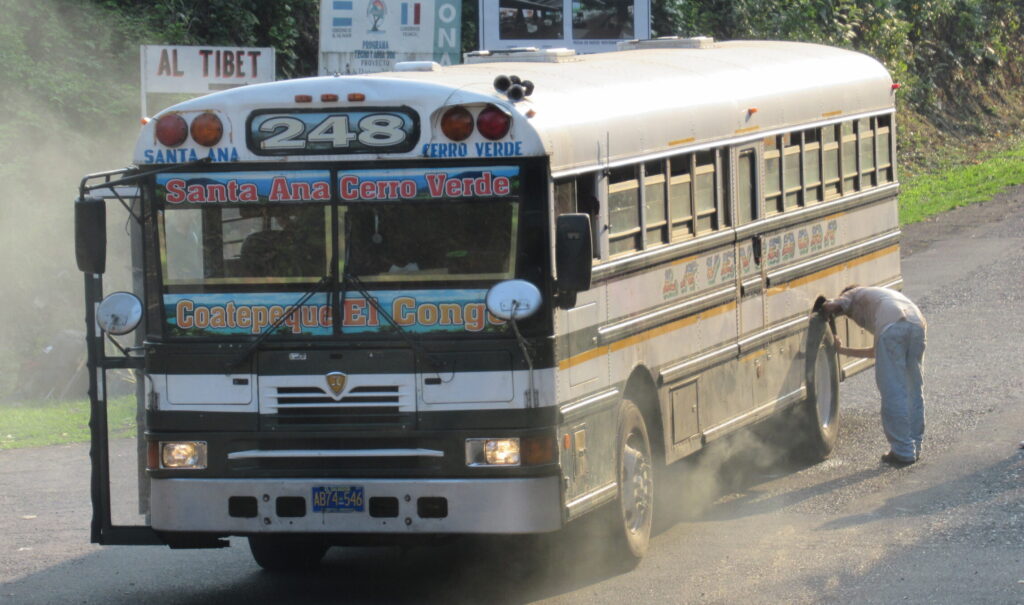


In Guatemala we ended up taking only one chicken bus – from Panajachel to Antigua. This bus won the award for ‘extreme chicken bus driving’ – it was the fastest chicken bus in the world – I am not exaggerating – it went full speed down the highway overtaking every other chicken bus in sight and hardly ever stopping – very ‘unchicken bus like’ indeed. It was also only about a quarter full. Apart from the fear of crashing it was quite a nice journey.. 🙂
We don’t have a photo of the speediest bus in Central America so here is one of a school bus parked under a tree…
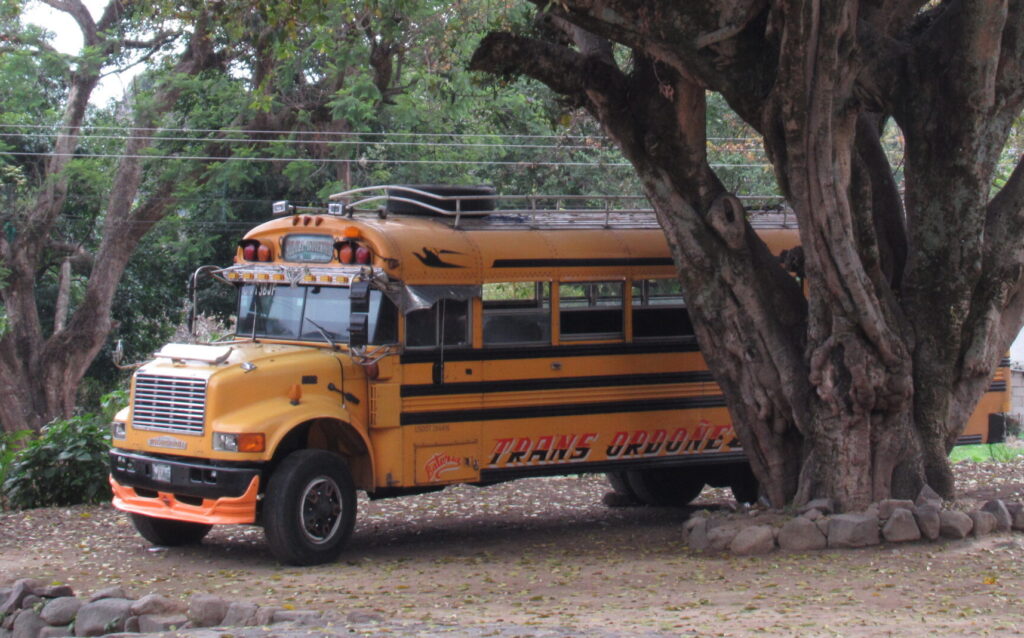
And finally in the chicken bus category we come to Belize. Belize is very small and all the buses were chicken buses. They were also pretty good at running on time and marking the destinations in the window of the bus. So a thumbs up for Belize buses, and here they are…
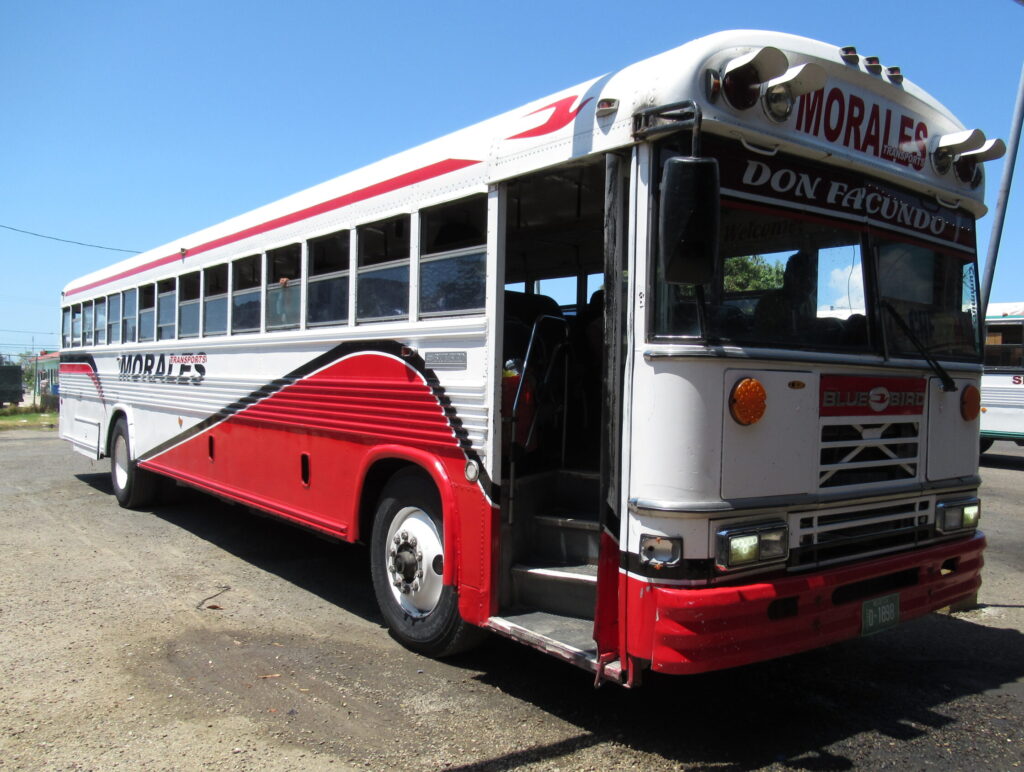

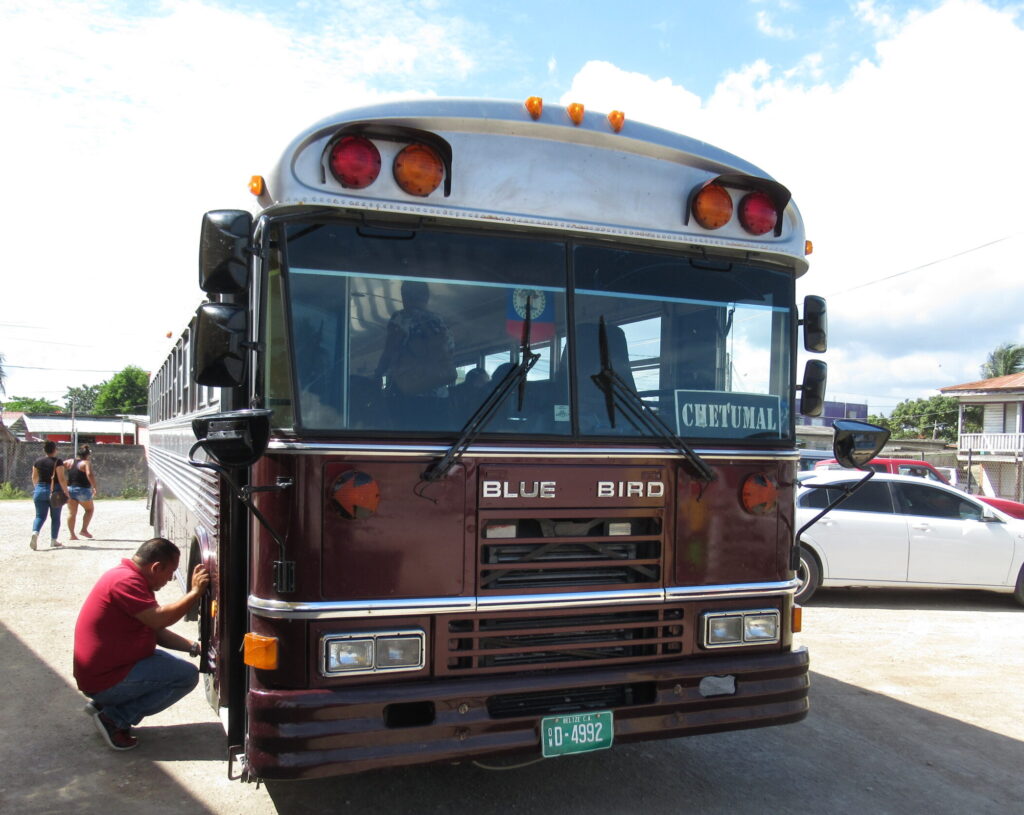
When is a chicken bus not a chicken bus?
In Costa Rica it seems that they have replaced chicken buses with what I would call ‘city buses’. By this, I mean the type of bus that might run in a city like London or Sydney from the suburbs to the centre. So with hard rigid seats and a door at the front, and also a door in the middle of the bus.
One of the best things about chicken buses and these ‘not’ chicken buses is that the seats don’t recline – so no more annoying passengers reclining the seat right back so that their head is practically in your face. The Costa Rica buses didn’t charge extra for luggage, and you may be wondering where they would put luggage – anyone who has been to the airport on a crowded city bus with a backpack will know that there is usually nowhere to put luggage…. I quite liked the Costa Rica solution which was to discontinue use of the middle doors of the bus and pile up any luggage in a big pile in the space in front of these doors. Problem solved!
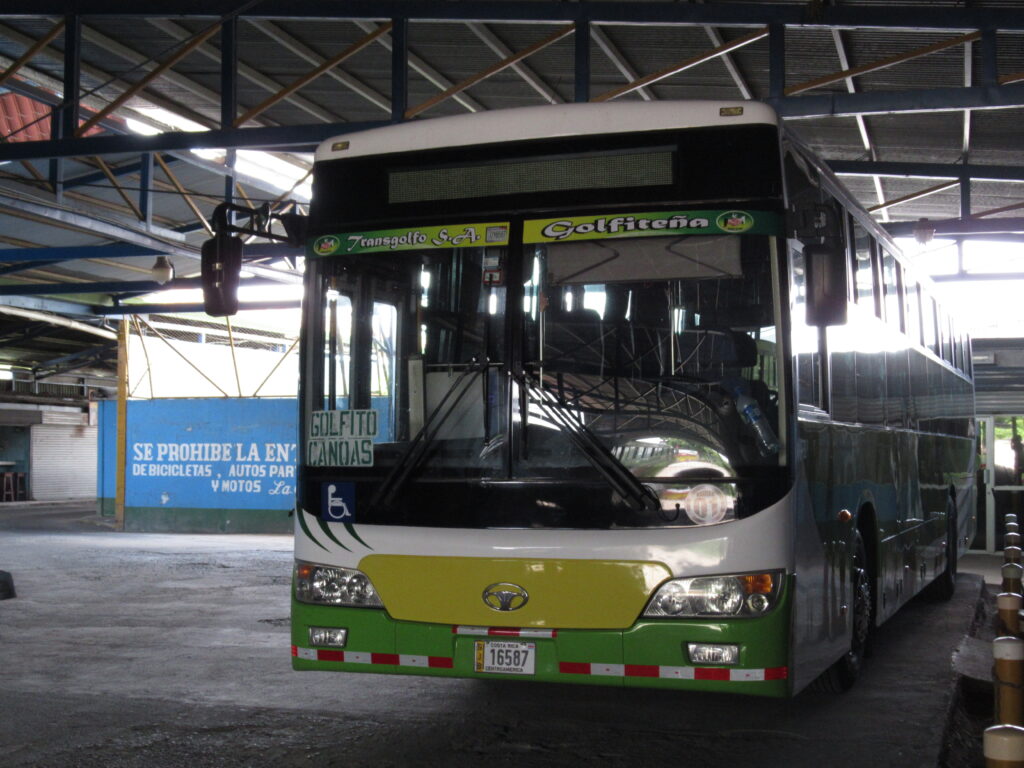
While we are talking about Costa Rica I will mention boats – yes, boats are clearly not buses – but a few of our journeys in Costa Rica involved boats, as they use them as public transport to connect some peninsulas to the mainland as it’s much quicker than going the long way around on the road.
We took boats to and from the Osa Peninsula, and both times they were a great way to travel 🙂


Intercity buses
Long distance buses – eg. coaches where you get allocated a specific seat- are fairly rare in Central America, and mostly run between the capital cities. So if you want to go from Panama straight through to San Salvador – no problem. They are comparatively very expensive and supposedly some are a very good standard. As we didn’t intend to visit any of the capital cities after Panama City, these buses were of limited use. We did take a few buses like this though, and the standard was comparable to a cheap long distance bus in somewhere like Peru.

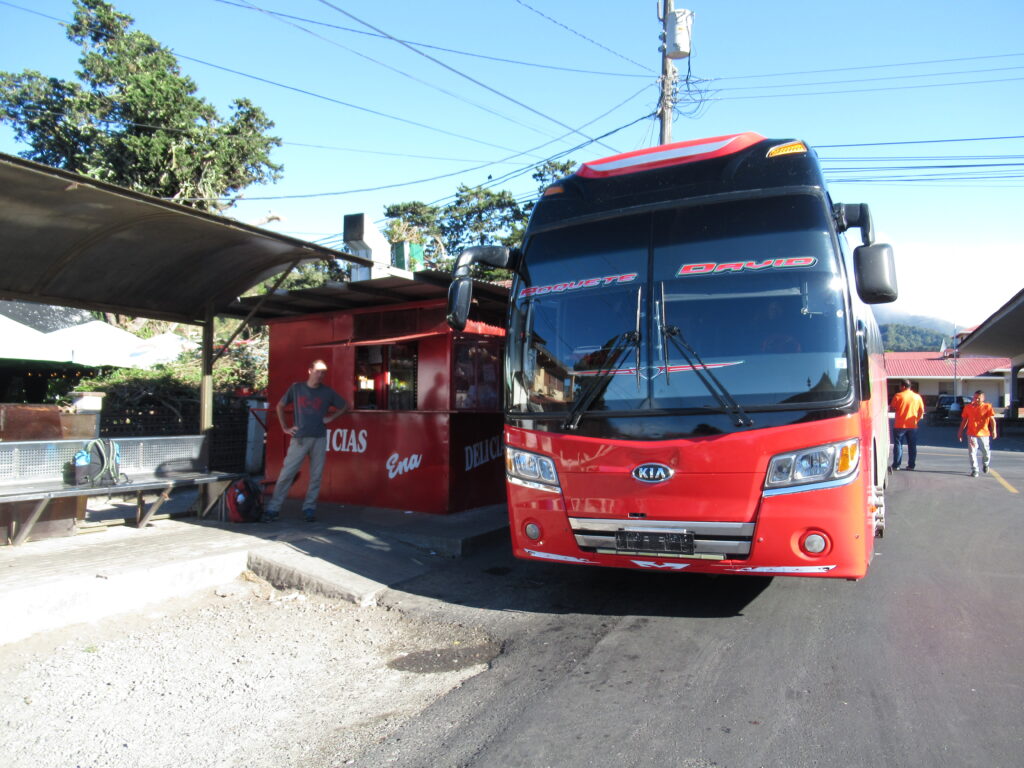
Colectivos and minivans
Just like in South America, some countries in Central America have embraced the minivan as a speedy way to travel. It’s only speedy once it leaves – as it waits until it’s full and then canes it at high speed to its destination. If you arrive at the right time and don’t have to wait too long for it to fill up, then it’s very speedy and fairly comfortable.
We used them mostly in Nicaragua, and they cost around double a chicken bus and are probably at least twice as fast as well. Usually the luggage gets tied to the roof although there is some space in the back.



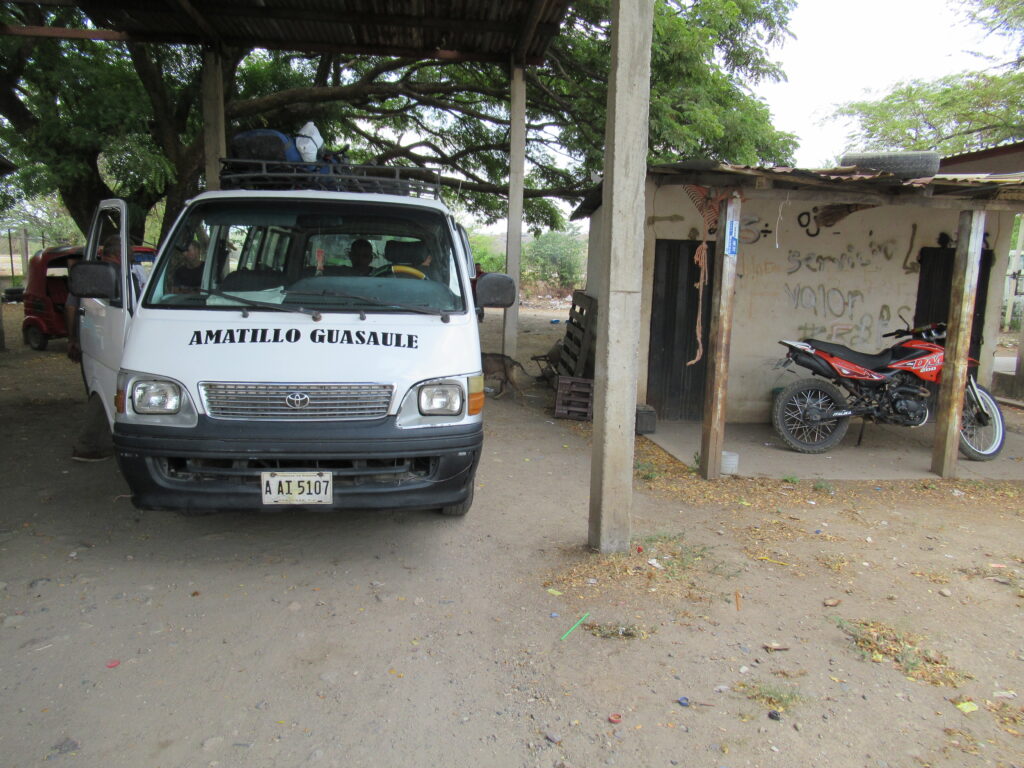
Tourist shuttles
Next we come to tourist shuttles – the easiest and also most expensive way to travel in Central America! As I mentioned previously, most transport is via the capital cities, and most tourists don’t want to go to the capital cities – they want to go to tourist places – which are usually in the mountains or on the coast. These tourist places are not generally connected by direct public transport, and so to go from one place to another place – which might be only 3 or 4 hours by direct drive – could take up to 10 hours and involve four or five buses, plus a potential change of bus station in a capital city…
Yes, and that is not any idea of fun for a tourist is it?! Plus, if you only have a few weeks in Central America then you perhaps don’t want to waste all that time do you? They are minivans, and they pick you up at your accommodation in one place, and then drop you at your accommodation in another place – TOO EASY! 🙂
We used these a few times to cross international borders – yes we are soft, what can you do? It really was very easy, it almost felt like using a plane – where you get on in one place and then suddenly you are somewhere else and you haven’t seen what’s in between. Most of the time though, we couldn’t justify the extra cost of using them.

Taxis
What’s this?! First tourist shuttles and now taxis?! What kind of backpackers are we? Well, as a rule we don’t like taking taxis – but sometimes it’s better for safety reasons. Despite not wanting to visit any of the capitals during our time in Central America, it was unavoidable except in Costa Rica (where there is a main road along the coast and the capital is up in the mountains).
Most buses go to and from the capital cities, and more often than not you have to arrive and depart from a different bus station – meaning a journey across the big, bad city… we preferred to do these journeys by taxi!
We got away with it in Managua, Nicaragua as we discovered that if you took a minivan instead of a chicken bus you could change minivans at the same station when going from Granada to Leon, and so no need to cross Managua.
In El Salvador, no such luck – to go from San Miguel to Santa Ana required changing bus stations in San Salvador. It’s possible to take a connecting inner city chicken bus, but as both the bus stations are in pretty dodgy gang-controlled areas, it’s not super-recommended… so we took a taxi. It took almost an hour and we had no idea where we were the whole time, but we got lots of views of different parts of San Salvador…
Overall I would say that it’s a bit trickier to get around Central America by bus compared to South America – hence the creation of tourist shuttles. But it’s not too bad once you get the hang of it! 🙂
